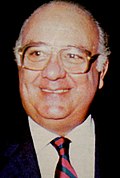This article needs additional citations for verification .(December 2017) |
The Yumare massacre was an incident in which agents of DISIP, the counter-intelligence agency of Venezuela, killed nine social activists, who were mistaken for members of a guerrilla group. [1] It took place on 8 May 1986, in Yaracuy State, Venezuela. [2] At the time, officials falsely claimed that the activists had ambushed the DISIP agents and were killed during an armed confrontation. The actual circumstances of the incident were revealed in 2011 by retired Army General Alexis Ramón Sanchéz, who admitted his role in the killings. [2]

